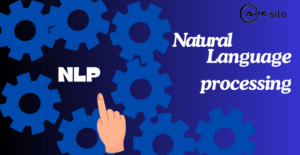The Future of NLP: From Statistical Models to Context-Aware Systems is used in artificial intelligence to reproduce human language and text on computing devices.

eWEEK content and product recommendations are editorial freedom.
Natural language processing NLP is one of the branches of artificial intelligence (AI) that focuses on computers incorporating speech and text in a manner as compared to human understanding. This part of computer science relies on computational linguistcsــــ usually based on statistical and mathematical methods that reproduce human language use.
NLP plays a progressively prominent role in __computing -and the daily life of humans. Smart assistants such as Apple’s Siri, Amazon’s Alexa, and Microsoft’s Cortana are examples of systems that use NLP.
In addition, various tools rely on natural language processing. All of them: are navigation systems in automobiles: and speech–to–text–to–text transcription systems such as Otter and Rav.

Throughout the ensuing decades, researchers experimented with computers translating novels and other documents across spoken languages, though the process was extremely slow and prone to errors.
As computing systems that more powerful in the 1990s, researchers began to achieve notable advances using statistical modeling methods.
In the beginning, the NLP system relied on hard-coded rules, dictionary lookups, and statistical methods to do their work. They mostly supported basic decision-tree models, Machines automatically completed their tasks and improved results.
Nowadays Natural language processing frameworks are used for more advanced___ and precise__ language modeling techniques.
A method called word vectors applies complex mathematical models to weight and related words, phrases, and constraints. Another technique is called Recognizing textual Entilment [RTE].
There is no question that natural language processing will play a prominent role in future business and personal interactions.
Natural language processing also connects to more advanced analysis of medical data. For example, a doctor thought that inputting patient symptoms and database using NLP would cross-check them with the latest medical class. Or a consumer thought visits a travel site and says where she wants to go on vacation and what she wants to do.
NLP could be a multidisciplinary field that combines etymology, computer science, and manufactured insights to empower computers to get, translate, and create human language.
It includes different strategies for handling and analyzing huge sums of normal dialect information.
Key applications of NLP incorporate machine interpretation, assumption, chatbots, and discourse acknowledgment as the innovation propels.NLP moves toward the interaction between people and machines, making it more natural and proficient.
The longer-term of NLP holds potential for indeed more advanced and context-aware language understanding frameworks.



The Future of NLP: From Statistical Models to Context-Aware Systems